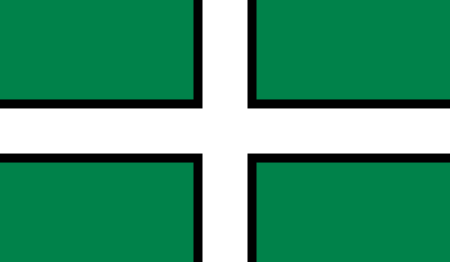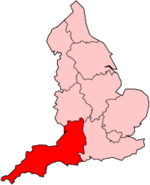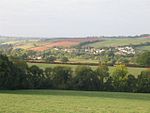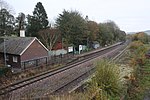Devon

Devon ( DEV-ən, also historically known as Devonshire DEV-ən-sheer, -shər) is a ceremonial, non-metropolitan, and historic county in South West England. Devon is coastal with a variety of cliffs and sandy beaches. It has the largest open space in southern England, Dartmoor National Park. A predominately rural county, Devon has a relatively low population density for a county in England. Its most populous settlement is the City of Plymouth. The county town of Devon, the City of Exeter, is the second most populous settlement. The county is bordered by Somerset to the north east, Dorset to the east, and Cornwall to the west. Its economy is heavily orientated around the tourism and agriculture industries. Devon is administratively split into the non-metropolitan districts of East Devon, Mid Devon, North Devon, South Hams, Teignbridge, Torridge, West Devon, Exeter, and two unitary authority areas of Plymouth, and Torbay. Combined as a ceremonial county, Devon's area is 6,707 km2 (2,590 square miles) and its population is about 1.2 million. The county derives its name from Dumnonia (the shift from m to v is a typical Celtic consonant shift). During the British Iron Age, Roman Britain and the early Middle Ages, this was the homeland of the Dumnonii Brittonic Celts. The Anglo-Saxon settlement of Britain resulted in the partial assimilation of Dumnonia into the Kingdom of Wessex during the eighth and ninth centuries. The western boundary with Cornwall was set at the River Tamar by King Æthelstan in 936. Devon was later constituted as a shire of the Kingdom of England.
Excerpt from the Wikipedia article Devon (License: CC BY-SA 3.0, Authors, Images).Devon
Teignbridge Tedburn St. Mary
Geographical coordinates (GPS) Address Nearby Places Show on map
Geographical coordinates (GPS)
| Latitude | Longitude |
|---|---|
| N 50.716666666667 ° | E -3.7166666666667 ° |
Address
EX6 7AJ Teignbridge, Tedburn St. Mary
England, United Kingdom
Open on Google Maps











